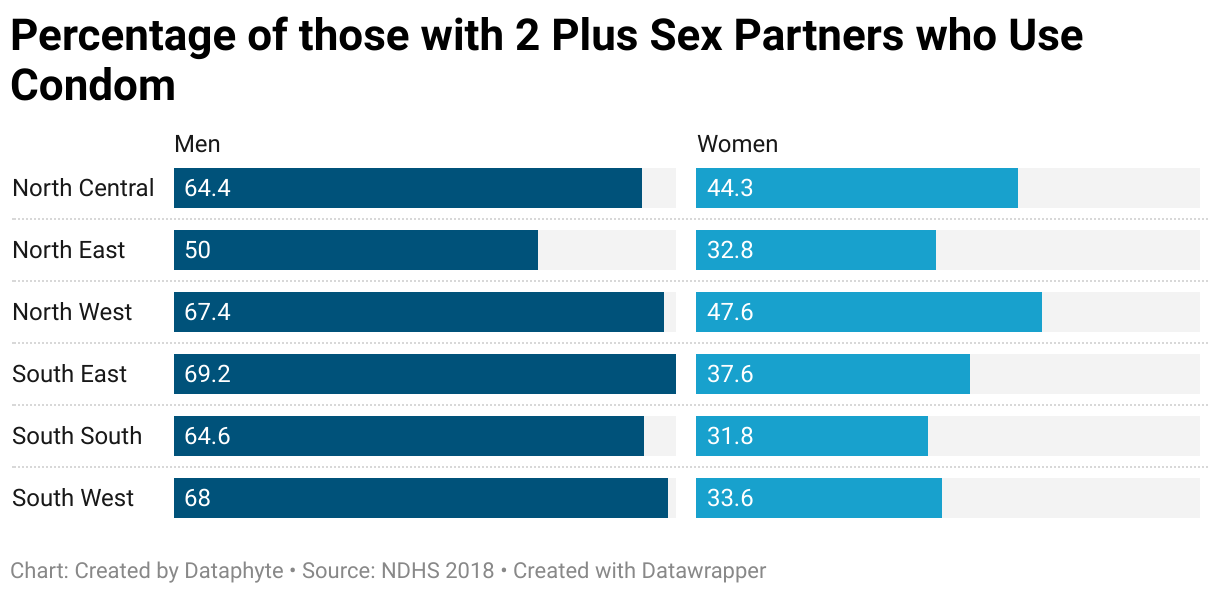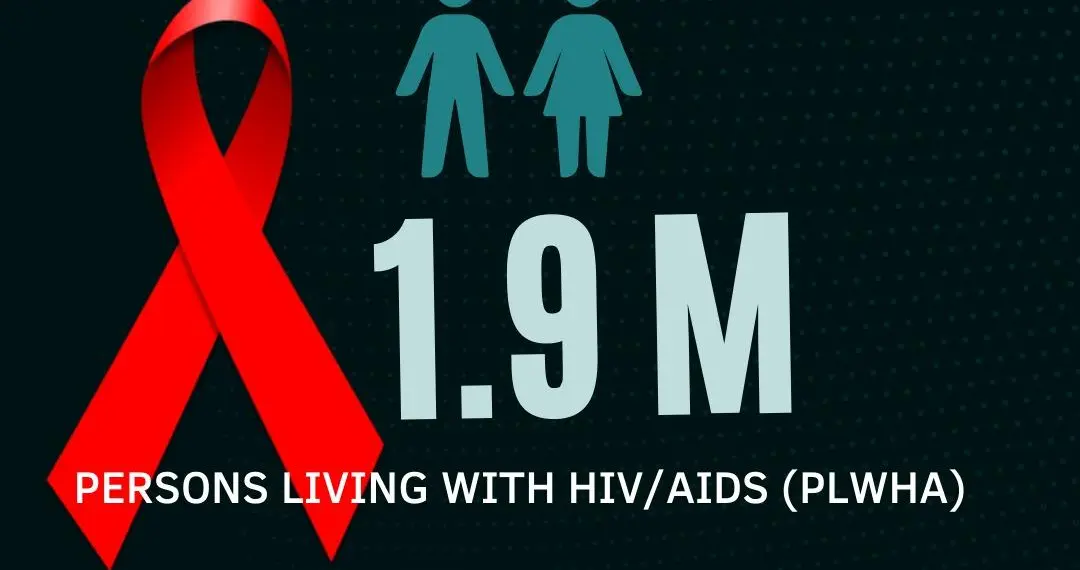Today, the global community marks World AIDS Day with the theme “End Inequalities, End AIDS”.
Globally, the first case was reported in 1920 in the Democratic Republic of Congo. The current figure of people living with HIV/AIDS in the world stands at 38 million.
In Nigeria, the first two cases were diagnosed in 1985 and reported in 1986 in Lagos state. In 2016, the number of people living with HIV/AIDS (PLWHA) was estimated to be around 3.2 million.
Today, the country currently has 1.9 million PLWHA, this data shows an increase over the 2018 numbers.
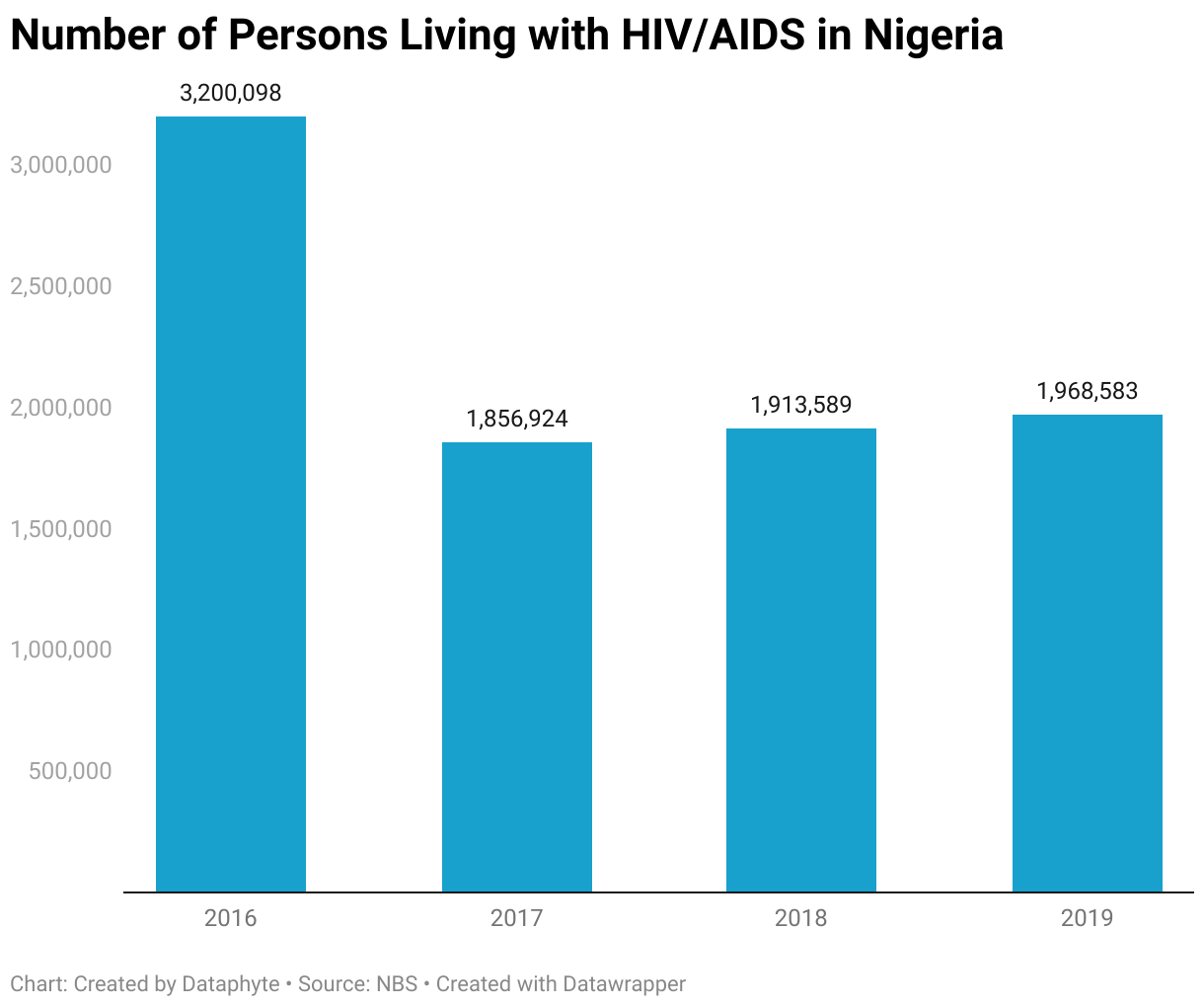
Women accounted for 56% of the total figure in 2019, while men for 44%. A recent ‘statistical report on women and men in Nigeria’ by the NBS has revealed that the number of women living with HIV/AIDS is on the rise.
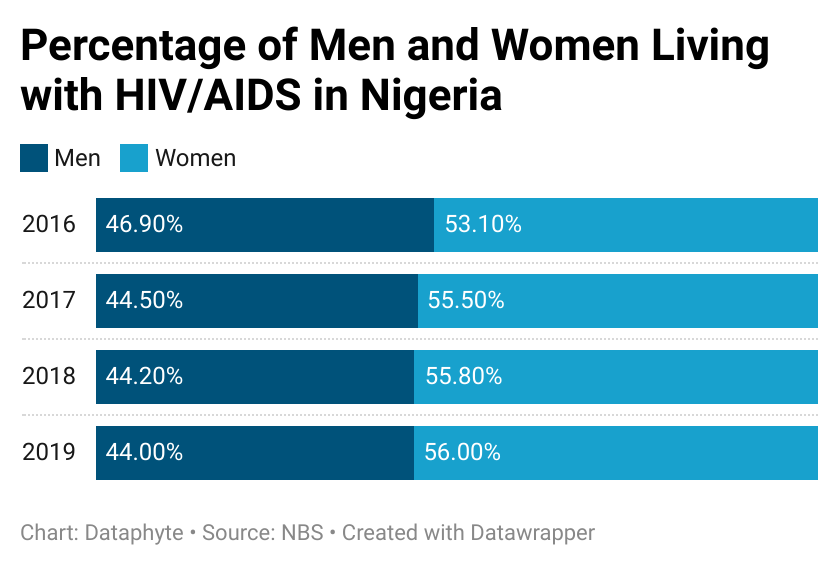
Prevalence Rate
Nigeria has a 1.4% national prevalence rate of HIV/AIDS. This is a drop from the previous 2.8% rate reported by the government. This indicates a 1.4% drop in the prevalence rate of the disease in the country.
However, eleven states in the country had high prevailing rates above the national average. Data shows that Akwa Ibom has the highest prevailing rate of AIDS in the country with a 5.6% figure. Other states with high figures are Benue with 4.9%, Rivers with 3.8% and Taraba and Anambra with 2.7% each.
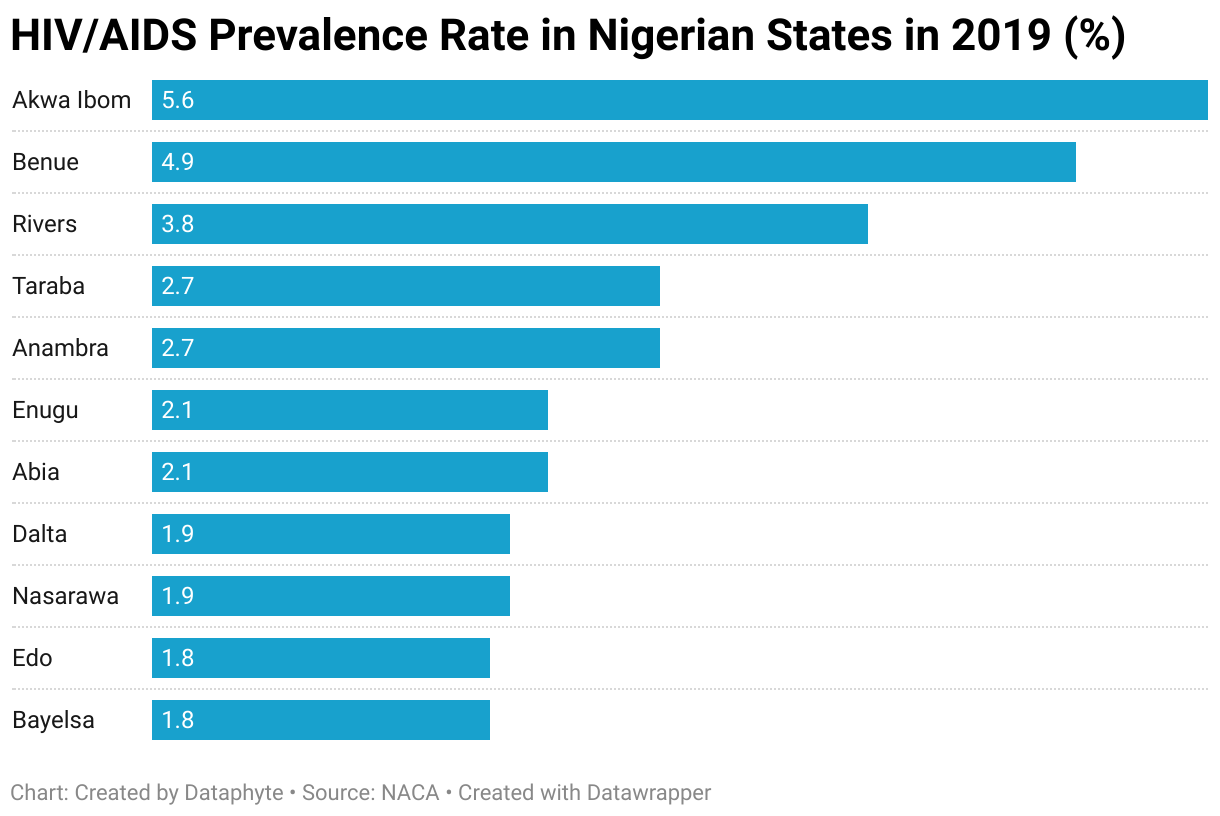
Access to Antiretroviral
Antiretroviral drugs are remedially stopping the virus from reproducing in the body of carriers. This gives them a chance to live a healthy life with the virus. Thus making antiretroviral available to HIV/AIDS patients in Nigeria will enable them to live a better life, keeping the disease at bay.
However, only 30% of the people living with the disease have access to antiretrovirals. This increases the risk factor of the majority of those infected with the disease and reduces their chances of survival.
In 2018, Benue had the highest number of patients with access to the antiretroviral, followed by Nasarawa state. However, Akwa-Ibom being the state with the highest prevalence rate had less access to the drug..
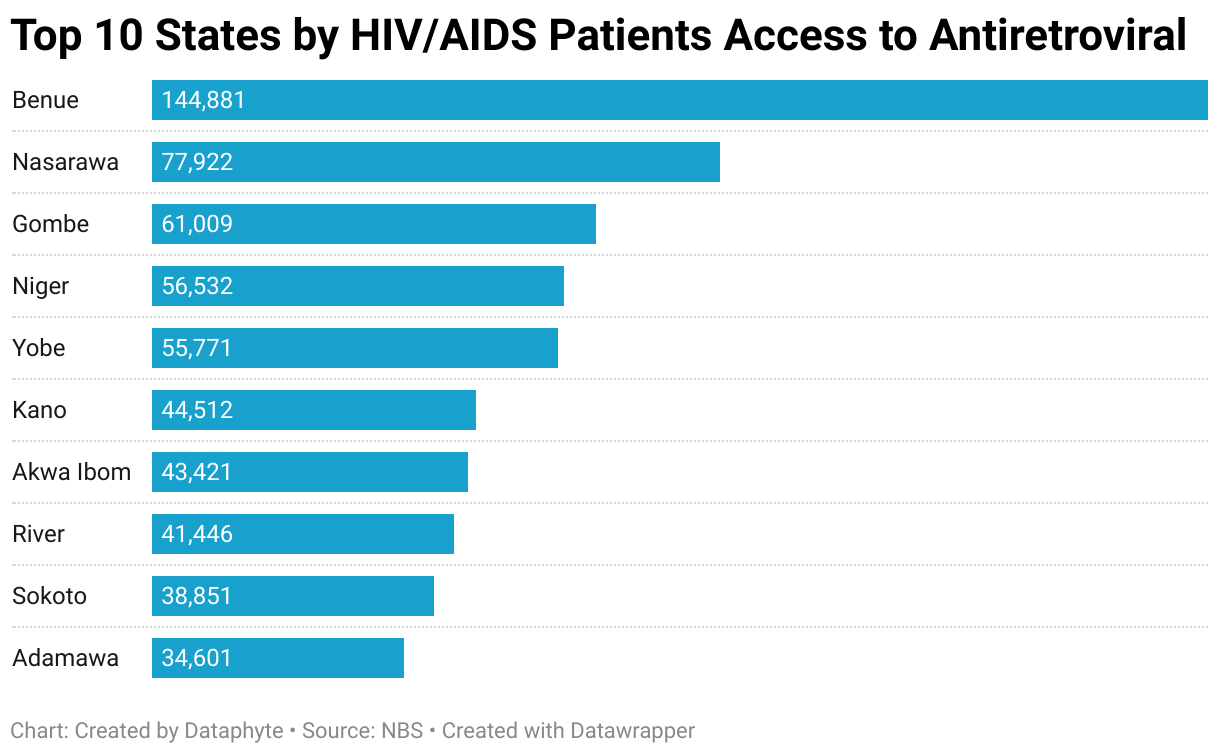
Discriminatory Attitude Towards People Living with HIV/AIDS
The attitude towards persons living with the disease has an effect on their general well being and how they are integrated into society. This affects their work-life and health. And most of the victims die faster due to discrimination than the disease itself.
In Nigeria, those living with the disease are somewhat discriminated against; ranging from the denial of gainful employment, forced resignation or retirement, segregation in hospital wards; to mention a few.
This discrimination is perpetuated more by women than men. Most women seem to show more discriminatory attitudes towards persons living with HIV/AIDS than men.

Also, such discrimination is high in rural areas than the urban. While 61.2% of the women living in the rural areas show discriminatory attitudes towards AIDS patients, only 57.4% of those in urban have this perception. For the men, 59.1% of those in rural areas show a perceived difference towards persons living with AIDS whereas just 57.1% of urban dwellers have this view.
High Risk Attitude by Nigerians
People at risk of contracting HIV are those with multiple sex partners and those who have unprotected sex. Men are at a higher risk of contracting HIV than women as they are more likely to have more than two sex partners.
The South-South region has more persons with multiple sex partners than all other regions. For both men and women, the region had 18.5% and 3.8% which is higher compared to other regions.
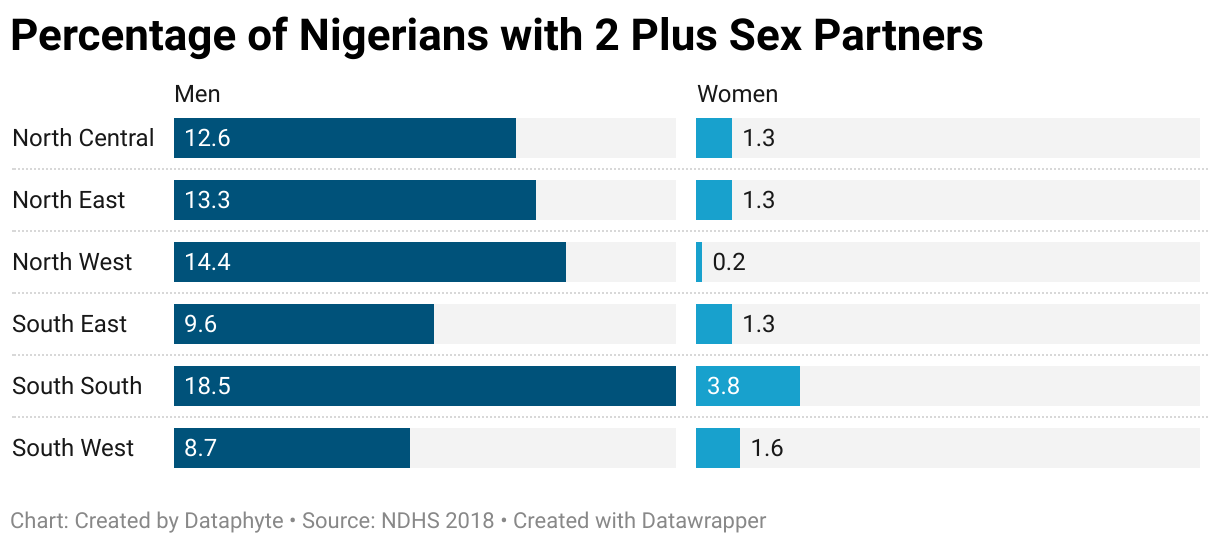
However, despite men being more prone to contracting the disease due to the number of sex partners, women are more at risk due to unprotected sex. More men practice safe sex than women as more men are reported to use condoms with multiple sex partners than women.
On using contraceptives (condom), men in the South-East region took the lead with 69.2%. South West followed with 68%, then North-West with 67.4%.
However, for women, North West recorded the highest percentage at 47.6%, North Central with 44.3%, then South-East with 37.6%.
